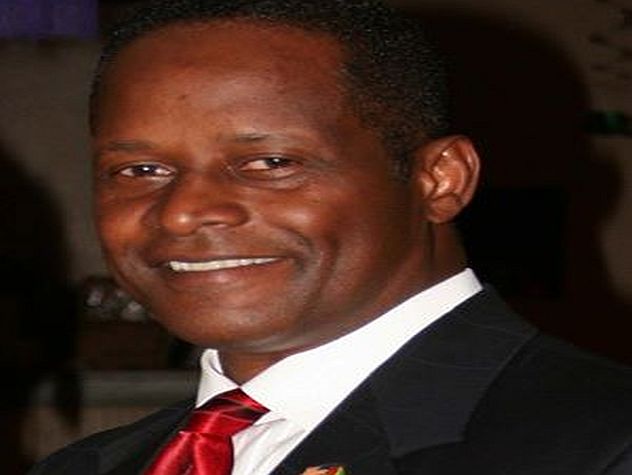By Wayne Forde
Many Guyanese often compare Guyana’s progress to that of Singapore; and although there are some similarities between Guyana and Singapore, there are significant differences. Guyana achieved independence from the UK in May 1966, and Singapore gained independence in August of 1965 also from the UK. And that is where the similarities end and divergence begins.
Singapore is a highly developed and prosperous free-market economy that depends on exports of electronics, petroleum products, medical and optical supplies, pharmaceuticals and chemicals, as well as transportation business, and financial services. Guyana is an under-developed and noncompetitive country with deficiencies and gaps in many areas.
Divergence of economies
Renowned business strategist and Harvard professor, Michael Porter, asked this question: “Why do some social groups, economic institutions, and nations advance and prosper? This question requires an honest assessment of the economic conditions and factors that are problematic for Guyana. The World Bank (2019) identified corruption and inefficient government bureaucracy as two of many problematic factors that hamper the ease of doing business in Guyana.
With 83,000 square miles of land space, Guyana dwarfs Singapore, which has 274 square miles. Both countries diverged in their economic and competitive trajectories starting in the 70s. Guyana depended heavily on exports of gold, diamonds, bauxite, rice, sugar, agricultural products, timber, and shrimp, which represent approximately 60 percent of Guyana’s GDP. Guyana’s gross domestic product (GDP) of U.S. $3.61 billion (World Bank, 2019) is a fraction of Singapore’s which US$ 491billion. Closer to home, Jamaica has a GDP of $15.7 billion and GNI of US$4,990 (World Bank, 2018).
Dependence on foreign labor to fill gaps in the labor force
Guyana has one of the highest emigration rates in the world, with 55 percent of the population living abroad. The World Bank (2019) describes Guyana as having and inadequately educated labor force and a poor work ethic compounded with inadequate infrastructure, and an insufficient capacity to innovate. Guyana’s inadequately- educated workforce stems from the high emigration rate of 83 percent of tertiary-educated nationals, commonly referred to as brain-drain, and a net migration of negative 3.2. percent that creates deficiencies in institutions and impedes sustained progress.
This brain-drain syndrome forces Guyana to depend heavily on foreign labor, especially in the new oil and gas sector. At the same time, Singapore is restructuring its economy to depend less on foreign workers. With the new oil and gas sector now online, Guyana’s dependence on foreign labor increases significantly. Without a structured mechanism and a policy to engage the Guyanese diaspora effectively, Guyana will continue to depend on nonGuyanese to fill many skilled- labor gaps and shore-up institutional capacity.
Other strategies to prosperity
What accounts for the disparity in growth rates between Guyana and Singapore? Natural resources such as oil and gas catapulted some countries to the middle-income category and created a high standard of living and quality of life for some of its citizens. Other countries such as Singapore achieved middle- income status and a high standard of living without depending on natural resources such as oil and gas. Singapore produces zero barrels of oil. Nevertheless, experts rank Singapore highly in many areas that include the conditions that foster entrepreneurship.
Singapore ranks first in entrepreneurial financial support, government policies, and government entrepreneurship programs in education and training, research and development transfer. In market openness, Singapore also is ranked among the top five countries.
While transparent strategic management of oil revenues can transform the landscape in Guyana through critical infrastructure development, increased GDP, and an improved standard of living, it is not the panacea for all the existing challenges. The challenges include but are not limited to inefficient government bureaucracy, access to financing, crime and theft, tax rates, inadequate supply of infrastructure, policy instability, and poor work ethic in labor force, restrictive labor regulations, poor public health, and an inadequately educated workforce (World Bank, 2019).
A success story
Guyana can learn a lot from the Singaporean model. Without extracting one drop of oil or exploiting natural resources, Singapore soared to become a prosperous and successful country. Even with the anticipated oil revenues, Guyana has a lot of catching up to do after 53 years of Independence.
In Singapore, the manufacturing and services sectors remain the twin pillars of its high value-added economy (World Bank, 2019). On the other hand, Guyana has depended on an agro-economy with little diversification. Singapore made starting a business easier by reducing the time and number of procedures to start a business by simplifying the online start-up process and abolishing the corporate seals. Exporting and importing is easier in Singapore because of improved infrastructure and electronic equipment. Besides, enforcing contracts was made easier by introducing a consolidated law on voluntary mediation. Dealing with construction permits in Singapore became easier by streamlining procedures and improving the online one-stop-shop.
As a resource-scarce country with 5.5 million people, Singapore ranks second in the ease of doing business. While the country is the most business-friendly regulatory environment for local entrepreneurs and is ranked among the world’s most competitive economies (GEM, 2019), Guyana ranks 134 in the same category (Ease of Doing Business) out of 190 countries. The ease of doing business provides quantitative indicators on regulation for starting a business, dealing with construction permits, getting electricity, registering property, getting credit protecting minority investors, paying taxes, trading across borders, enforcing contracts and resolving insolvency (World Bank,2019).
Singapore continues to enjoy a high level of entrepreneurial activity in which 11 percent of respondents interviewed are starting a business, and 15 percent have the intention of doing so within three years. In 2018, 61,804 business entities began doing business in Singapore. In the same period, 45,609 ceased operating. There is a paucity of data for Guyana in the area of business discontinuance, closure, and the factors that determine small and medium-sized enterprise (SME) success. With oil and gas revenues Guyana will have no financial constraints to make critical reforms, and bolster and develop capabilities for prosperity at an accelerated rate.







